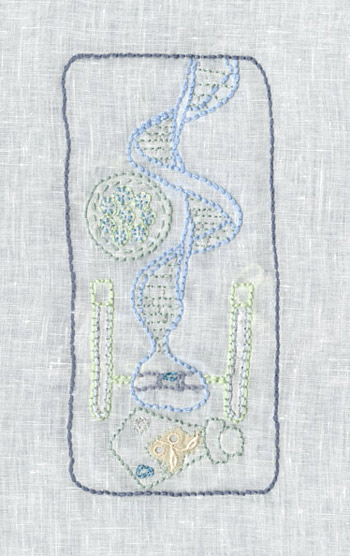When Poetry Comes to Life: A Walk Through a World of Words

There can be a palpable sense of forward-motion experienced while reading the work of a gifted poet. There is meter and flow; the poetry has a heartbeat—it takes on a life on its own. Images conjured by the words on the page float through streams of consciousness as if staring contently out the window of a train, only the poem is the scenery.
2009 Kingsley Tufts Poetry Award Winner Matthea Harvey realized this metaphor a step further with her role in the creation of Telettrofono, a soundwalk designed to be part of the stillspotting nyc: staten island exhibit for The Guggenheim. The concept of a soundwalk has origins in 1970s, and is defined as an excursion whose main purpose is listening to the environment. Telettrofono, a collaborative project with sound artist Justin Bennett, built off this idea. Visitors of the exhibit were instructed to walk around Staten Island with borrowed iPods that contained a pre-recorded track—a combination of recitation of Harvey’s prose and Bennett’s ambient sounds. In addition, pictures of various intricate needlepoint works accompanied the prose.
Much like the corresponding needlepoint works, Harvey’s prose is an intricately-woven, dizzying, and creative tapestry that blurs the line between fairy tale and reality by interspersing the biography of Italian inventor Antonio Meucci with fantastical narrative and creative asides: ultimately making for an extremely original and compelling work. In addition, the soundtrack complements the narrative perfectly; it strikes a balance between effectively engaging the listener and maintaining a level of minimalism such as to complement the prose rather than intrude upon it. One can instantly pick up on the nautical vibe of the piece: the compressed filtering of the audio makes one feel as if they are listening to the transmission of a recording broadcast from somewhere on land to the loudspeakers of a submarine (Harvey’s reimagined life of Meucci has it that he secretly married a mermaid).
Though a sense of wonder certainly pervades the piece, there is also an aspect of social commentary. The work opens with an instruction for those listening to “turn off all twenty-first-century gadgets”, and the first needlepoint art is an imaginative cross-section of Meucci’s telettrofono, which is touted as the very first telephone. Only, this telephone looks nothing like the ubiquitous Android or Apple smartphones each one of us carries in our pockets. The innards of Meucci’s telettrofono are composed of: “a swimbladder, a microphone made of minimolluscs, and, floating in a small stoppered vial, one petticoat snippet, one mermaid tear, and a cell from the gill of an electric eel.”
I was immediately struck by the contrast between Harvey’s imagined telettrofono and our modern-day smartphone. Though we may wonder at the wealth of information that is readily available at our fingertips, in reality, our phones are comprised of little more than metal and plastic and all the information therein amounts to mere ones and zeroes—hardly a marvel. But the supposed components of the telettrofono are something to be marveled at: an unexpected hodgepodge of marine artifacts. To imagine these working in unison to comprise a functioning telephone is truly magical. Additionally, I believe choosing a soundwalk for the medium of this piece was hardly a coincidence. It was difficult to get the ironic image of exhibit-goers walking around bustling New York, entranced in the magical space that Harvey and Bennett created, all the while perpetually staring at iPods—out of my head.
Though Harvey’s narrative is certainly fantastical, I can’t help but shake the feeling she is trying to remind us that if we just take a walk and unplug every once in awhile, maybe we would discover that wonder really does still exist in our world after all. Maybe we will find this wonder on an adventure somewhere bathed in sunlight, instead of through a Google search: our faces encompassed by the soft blue fluorescent light of our phones.
—Michael Kemp
Share